Jewish History Books for Young Adults: The Holocaust (Page 4) |
If you wish to purchase any of these books, click on either the title or the book cover to be directed to Amazon.com. As a warning, I have put up pictures of the book covers to give you somewhat an idea of the style of each book (I know, I know. "Don't judge a book by its cover") so the pages may load slowly, depending on the speed of your internet connection.
If this page came up without frames, Click here to see the complete website
NOTE: For biographies of individuals associated with the Holocaust (Anne Frank,
Simon Wiesenthal, etc.), go to the
Biographies
For historical fiction books that take place during the Holocaust, go to the
Holocaust Historical Fiction Books Page
For Holocaust books for younger readers, go to the Children's History Page
Other Pages of Interest:
Holocaust History Books For Middle School and Young Adult Readers ...
(Page 1)
(Page 2)
(Page 3)
(Page 4)
(Page 5)
(Page 6)
Holocaust Historical Fiction Books For Middle School and Young Adult Readers ...
(Page 1)
(Page 2)
(Page 3)
(Page 4)
(Page 5)
(Page 6)
Middle School and YA Books ...
Bar Mitzvah Books |
Jewish Fiction |
Historical Fiction |
Torah Study |
Prayer and Jewish Life Books |
Jewish Holidays |
Jewish Biographies |
Jewish History Books |
Holocaust Books for Teens |
Israel Books
Jewish Historical Fiction for Middle School and YA Readers...
Biblical Era |
Middle Ages, Renaissance, and the Spanish Inquisition |
Immigration & The American Experience |
European History |
Holocaust
(Page 1)
(Page 2)
(Page 3)
(Page 4)
(Page 5)
(Page 6) |
Israel
Jewish History Books for Middle School and Young Adult Readers ...
General Jewish History & Nonfiction |
Biblical Era |
European History (Excluding the Holocaust) |
Immigration & The American Experience |
Holocaust |
Israel
Easy Reader and Picture Books ...
Jewish Children's Books (General) |
Jewish Board Books |
Biblical Stories for Children |
Jewish Holiday Books |
Jewish Family Cookbooks |
Folktales and Talmudic Stories for Children |
Jewish Life Books (Mitzvot, Keeping Kosher, etc.) |
Jewish Life Cycle Books |
Family Haggadahs |
Children's Prayerbooks |
Introductory Hebrew Books |
Jewish History and Historical Fiction Picture Books |
Israel Books
And More ...
Jewish Books for Children |
Bar Mitzvah Books |
Jewish Parenting Books |
Hanukkah Books |
Jewish Music for Children |
Jewish Videos |
Jewish Toys and Gifts |
Jewish Gift Baskets and Gourmet Food |
Jewish Jewelry |
Amazon.com Coupons, Promotions, and Sales
NOTE: For biographies of individuals associated with the Holocaust (Anne Frank,
Simon Wiesenthal, etc.), go to the
Biographies
For historical fiction books that take place during the Holocaust, go to the
Holocaust Historical Fiction Books Page
For Holocaust books for younger readers, go to the Children's History Page
Other Pages of Interest:
Holocaust History Books For Middle School and Young Adult Readers ...
(Page 1)
(Page 2)
(Page 3)
(Page 4)
(Page 5)
(Page 6)
Holocaust Historical Fiction Books For Middle School and Young Adult Readers ...
(Page 1)
(Page 2)
(Page 3)
(Page 4)
(Page 5)
(Page 6)
Middle School and YA Books ...
Bar Mitzvah Books |
Jewish Fiction |
Historical Fiction |
Torah Study |
Prayer and Jewish Life Books |
Jewish Holidays |
Jewish Biographies |
Jewish History Books |
Holocaust Books for Teens |
Israel Books
Jewish Historical Fiction for Middle School and YA Readers...
Biblical Era |
Middle Ages, Renaissance, and the Spanish Inquisition |
Immigration & The American Experience |
European History |
Holocaust
(Page 1)
(Page 2)
(Page 3)
(Page 4)
(Page 5)
(Page 6) |
Israel
Jewish History Books for Middle School and Young Adult Readers ...
General Jewish History & Nonfiction |
Biblical Era |
European History (Excluding the Holocaust) |
Immigration & The American Experience |
Holocaust |
Israel
Easy Reader and Picture Books ...
Jewish Children's Books (General) |
Jewish Board Books |
Biblical Stories for Children |
Jewish Holiday Books |
Jewish Family Cookbooks |
Folktales and Talmudic Stories for Children |
Jewish Life Books (Mitzvot, Keeping Kosher, etc.) |
Jewish Life Cycle Books |
Family Haggadahs |
Children's Prayerbooks |
Introductory Hebrew Books |
Jewish History and Historical Fiction Picture Books |
Israel Books
And More ...
Jewish Books for Children |
Bar Mitzvah Books |
Jewish Parenting Books |
Hanukkah Books |
Jewish Music for Children |
Jewish Videos |
Jewish Toys and Gifts |
Jewish Gift Baskets and Gourmet Food |
Jewish Jewelry |
Amazon.com Coupons, Promotions, and Sales
Other Pages of Interest:
Holocaust History Books For Middle School and Young Adult Readers ...
(Page 1)
(Page 2)
(Page 3)
(Page 4)
(Page 5)
(Page 6)
Holocaust Historical Fiction Books For Middle School and Young Adult Readers ...
(Page 1)
(Page 2)
(Page 3)
(Page 4)
(Page 5)
(Page 6)
Middle School and YA Books ...
Bar Mitzvah Books |
Jewish Fiction |
Historical Fiction |
Torah Study |
Prayer and Jewish Life Books |
Jewish Holidays |
Jewish Biographies |
Jewish History Books |
Holocaust Books for Teens |
Israel Books
Jewish Historical Fiction for Middle School and YA Readers...
Biblical Era |
Middle Ages, Renaissance, and the Spanish Inquisition |
Immigration & The American Experience |
European History |
Holocaust
(Page 1)
(Page 2)
(Page 3)
(Page 4)
(Page 5)
(Page 6) |
Israel
Jewish History Books for Middle School and Young Adult Readers ...
General Jewish History & Nonfiction |
Biblical Era |
European History (Excluding the Holocaust) |
Immigration & The American Experience |
Holocaust |
Israel
Easy Reader and Picture Books ...
Jewish Children's Books (General) |
Jewish Board Books |
Biblical Stories for Children |
Jewish Holiday Books |
Jewish Family Cookbooks |
Folktales and Talmudic Stories for Children |
Jewish Life Books (Mitzvot, Keeping Kosher, etc.) |
Jewish Life Cycle Books |
Family Haggadahs |
Children's Prayerbooks |
Introductory Hebrew Books |
Jewish History and Historical Fiction Picture Books |
Israel Books
And More ...
Jewish Books for Children |
Bar Mitzvah Books |
Jewish Parenting Books |
Hanukkah Books |
Jewish Music for Children |
Jewish Videos |
Jewish Toys and Gifts |
Jewish Gift Baskets and Gourmet Food |
Jewish Jewelry |
Amazon.com Coupons, Promotions, and Sales
Holocaust Historical Fiction Books For Middle School and Young Adult Readers ... (Page 1) (Page 2) (Page 3) (Page 4) (Page 5) (Page 6)
Middle School and YA Books ... Bar Mitzvah Books | Jewish Fiction | Historical Fiction | Torah Study | Prayer and Jewish Life Books | Jewish Holidays | Jewish Biographies | Jewish History Books | Holocaust Books for Teens | Israel Books
Jewish Historical Fiction for Middle School and YA Readers... Biblical Era | Middle Ages, Renaissance, and the Spanish Inquisition | Immigration & The American Experience | European History | Holocaust (Page 1) (Page 2) (Page 3) (Page 4) (Page 5) (Page 6) | Israel
Jewish History Books for Middle School and Young Adult Readers ... General Jewish History & Nonfiction | Biblical Era | European History (Excluding the Holocaust) | Immigration & The American Experience | Holocaust | Israel
Easy Reader and Picture Books ... Jewish Children's Books (General) | Jewish Board Books | Biblical Stories for Children | Jewish Holiday Books | Jewish Family Cookbooks | Folktales and Talmudic Stories for Children | Jewish Life Books (Mitzvot, Keeping Kosher, etc.) | Jewish Life Cycle Books | Family Haggadahs | Children's Prayerbooks | Introductory Hebrew Books | Jewish History and Historical Fiction Picture Books | Israel Books
And More ... Jewish Books for Children | Bar Mitzvah Books | Jewish Parenting Books | Hanukkah Books | Jewish Music for Children | Jewish Videos | Jewish Toys and Gifts | Jewish Gift Baskets and Gourmet Food | Jewish Jewelry | Amazon.com Coupons, Promotions, and Sales
 We Are Witnesses : Five Diaries of Teenagers Who Died in the Holocaust |
Foreword by Patricia C. McKissack. Narrative accounts of five young
Jews, including Anne Frank, whose diaries hold their observations and
emotions, give immediacy to the horrors of the Holocaust. The text
provides historical information and compares the experiences of the
diarists, quoting liberally from the teenagers' writings. Although these
condensed versions lack the impact of a complete diary, the cumulative
effect of the five journals is overwhelming.
|
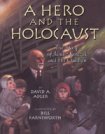 A Hero and the Holocaust: The Story of Janusz Korczak and His Children By David A. Adler |
A brief biography of the Polish doctor, author, founder of orphanages, and promoter of children's rights, who lost his life trying to protect his orphans from the Nazis.
A biography of the Polish doctor and children’s author who became director of a Jewish orphanage in Warsaw, in which capacity he comforted hundreds of children during the Holocaust. Korczak, himself Jewish (born Henryk Goldzsmit), took up his pen name as a child to appeal to a Gentile audience; as an adult, he dispensed homely advice over the radio, still downplaying his Jewish identity. In his capacity as director of the orphanage, he offered resistance to the Nazis and succor to the children. Korczak emerges as a virtual saint who, as the children were forced into the ghetto, led them in a parade so they would not be frightened. Farnsworth (Great Stone Face) delivers somber and atmospheric watercolors, painting a genial yet dignified Korczak. (Although, frustratingly, he declines to illustrate the green flag of Korczak’s character King Matt, mentioned in the text twice, which the children carried on the way to the ghetto and then to the trains to give them heart.) Adler (A Picture Book of Dwight David Eisenhower) does a creditable job of placing Korczak in history, describing simply the looming anti-Semitism of pre-war Poland and leading Korczak, children, and reader into the Warsaw Ghetto together. However, this work must be read or taught in concert with others on the same subject. The author sidesteps the actual nature of the concentration camp to which Korczak and his children were taken, writing only that the "train took [the Jews] to Treblinka. . . . There were signs for trains to other cities. But for Jews, there were no trains out of Treblinka. Janusz Korczak died there with his children." Introducing the horrors of the Holocaust to youngchildren is no easy feat, but surely treating them honestly is better than such disingenuousness. Reading in isolation, children will wonder what is heroic about a man who calmly led children he loved to these mysterious deaths. Worthy, but needs supplementation. |
 No Pretty Pictures : A Child of War By Anita Lobel |
Awards:
Lobel has written a haunting, honest, and ultimately life-affirming account of her childhood years in Nazi-occupied Poland. Born in Krakow to an affluent Jewish family, she and her younger brother were cared for by their nanny ("Niania"), a devout Catholic. Lobel was five when the Nazis arrived in Poland and her father left in the middle of the night. As the situation worsened, Niania took the children into hiding in the countryside while their mother remained in the city with fake identification papers. As the war continued, the siblings were hidden in various places, relying mostly on Niania to care for them, at great risk to herself. When Lobel and her brother were captured, Niania arranged to have the children delivered into the care of relatives inside the concentration camp at Plaszow. At the end of the war, Lobel, then 11, and her brother were sent to Sweden as refugees, where she thrived at a convalescent home while recovering from tuberculosis and was reunited with her parents. She ends the story with her family's emigration to the United States. The author's words are simple and straightforward, even when she describes the horror of life in the camp or the fear and loneliness of being separated from her family and nanny. This is a worthy addition to memoirs of war. Nominated for a 1998 National Book Award for Young People's Literature, No Pretty Pictures: A Child of War is Anita Lobel's gripping memoir of surviving the Holocaust. A Caldecott-winning illustrator of such delightful picture books as On Market Street, it is difficult to believe Lobel endured the horrific childhood she did. From age 5 to age 10, Lobel spent what are supposed to be carefree years hiding from the Nazis, protecting her younger brother, being captured and marched from camp to camp, and surviving completely dehumanizing conditions. A terrifying story by any measure, Lobel's memoir is all the more haunting as told from the first-person, child's-eye view. Her girlhood voice tells it like it is, without irony or even complete understanding, but with matter-of-fact honesty and astonishing attention to detail. She carves vivid, enduring images into readers' minds. On hiding in the attic of the ghetto: "We were always told to be very quiet. The whispers of the trapped grown-ups sounded like the noise of insects rubbing their legs together." On being discovered while hiding in a convent: "They lined us up facing the wall. I looked at the dark red bricks in front of me and waited for the shots. When the shouting continued and the shots didn't come, I noticed my breath hanging in thin puffs in the air." On trying not to draw the attention of the Nazis: "I wanted to shrink away. To fold into a small invisible thing that had no detectable smell. No breath. No flesh. No sound." It is a miracle that Lobel and her brother survived on their own in this world that any adult would find unbearable. Indeed, and appropriately, there are no pretty pictures here, and adults choosing to share this story with younger readers should make themselves readily available for explanations and comforting words. (The camps are full of excrement and death, all faithfully recorded in direct, unsparing language.) But this is a story that must be told, from the shocking beginning when a young girl watches the Nazis march into Krakow, to the final words of Lobel's epilogue: "My life has been good. I want more." |
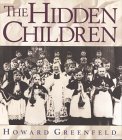 The Hidden Children By Howard Greenfeld |
"I remember all the time being told to be quiet, the Germans will get you." In
order to live, Jewish children had to go into hiding from the Nazis during the
Second World War. Greenfeld has spoken to survivors now living in the U.S., and
he weaves pieces of their painful personal narratives with a general account of
what it was like to be a Jewish child at that time. Like Anne Frank, many were
hidden by Righteous Gentiles, who often risked their own lives. Like the children
in Vos'
Hide
and Seek (1991) and
Anna
Is Still Here (1993), they
had to lie, to be always on guard. The individual voices are intense and quiet.
They speak of hunger, cold, terror, and loneliness. They remember suddenly being
ashamed of themselves. Boys had to hide that they were circumcised. These
children witnessed courage and also horror, such as the father who had to
strangle his screaming baby to save the others in hiding. They're honest about
their difficult readjustment after the war ("My mother was in such bad shape . . .
she had no teeth -- I couldn't stand being near her"). They will always feel
guilty for having survived while others died. The slightly oversize book,
printed on a fine vellum stock, is artistically designed, with clear type and
wide margins, and the personal narratives are set off in italics, with
occasional small black-and-white family snapshots that frame moments of
ordinary life. As always, what moves you is the terror in the mundane, the
thought that it could be you.
{This is a} moving narrative. . . . The most striking aspect of the book is the sharp survival instincts of many of the children. . . . One woman who was hidden in a Belgian convent recalls being dropped along with two other Jewish children down a chute into the coal cellar whenever the nuns feared a Nazi search. 'We were told not to cry, not to breathe and not to move, because we would die if we did,' she says. She was then 3 1/2 years old. . . . Even adults who have read widely about the Holocaust will find unforgettable images here. . . . In hiding, these children avoided the horrors of concentration camps,but they lost their childhood. Although the publisher says the book is for readers age 8 and up, I think it is better suited for children in the upper grades. The experiences of 15 children who survived the Holocaust in hiding are presented here within the historical context of the Nazi rise to power and World War II. These youngsters were sheltered in a variety of private homes and institutions by "righteous Gentiles," family friends, and those simply looking for additional money; some were resented, some treated compassionately, and others mistreated and abused physically. Greenfeld has interviewed these survivors, who are now living in the U.S., and has recorded their memories. Both the mundane and the unusual are remembered; the most commonly described feelings are the fear that family members would perish and the sense of guilt at having survived while others did not. There are reminiscences of narrow escapes and poignant remembered pleasures of edible treats. While the chronological arrangement of the book makes it difficult to follow a specific child's story (it is possible by using the excellent index), it succeeds admirably in allowing readers to place the experiences described within the framework of the Holocaust. An excellent selection of black-and-white photographs and an open design contribute to making this an important and accessible resource. |
 I Am a Star : Child of the Holocaust By Inge Auerbacher |
Inga Auerbacher's childhood was as happy and peaceful as any other German
child's--until 1942. By then, the Nazis were in power, and she and her parents
were rounded up and sent to a concentration camp. The Auerbachers defied death
for three years until they were freed. This story allows even the youngest
middle reader to understand the Holocaust.
Briefly and more accessibly than many other autobiographical accounts of the Holocaust, the author relates her own story along with a capsule summary of the history behind the widespread acceptance of Hitler's anti-Semitic policies. . . . The historical photographs are bleak, but Bernbaum's black-and-whiteart is much more so. Auerbacher's prose style is smooth, with the personal and political background surprisingly well-blended. What intrudes on the flow are frequent descriptive poems with forced rhyme, awkward meter, and sermonizing tone. The really moving witness here is in the simple, straightforward account. This account of one girl's Holocaust experience is rich for its interweaving of autobiography and historical data. At age six, Auerbacher was forced to wear the yellow star that set her apart. Then she was sent to the Terezin concentration camp in Czechoslovakia. Fifteen thousand children entered that camp, but only a hundred exited alive. And of more than 1000 people who arrived with Auerbacher, only 15 survived. It's a moving story supported by well-preserved wartime photographs and Bernbaum's harsh, spare drawings. The author's ability to survive is linked to her later capacity to translate hardship and tragedy into poetry of hope and perseverance. Her perspective, while chilling, pierces the heart with memorable imagery, such as envying the birds, which are free to fly away from the camp. |
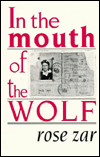 In the Mouth of the Wolf By Rose Zar |
Caught in the Nazi trap in her native Poland, Rose Zar's father
urged her to save herself by hiding "in the mouth of the wolf" --
within the enemy itself. She managed to obtain false papers,
secretly changing her identity and surviving the Holocaust as
a maid and a nanny for an SS colonel.
|
 Rescue : The Story of How Gentiles Saved Jews in the Holocaust By Milton Meltzer |
Awards:
Between the years 1933 and 1945, Adolf Hitler organized the Murder of six million Jews while the world looked on silently. But not all people stood back in fear. In every Nazioccupied Country, at every level of society, there were non-Jews who had the courage to resist. From the king of Denmark, refusing to force Jewish Danes to wear yellow stars, to the Dutch student, registering Jewish babies as Gentiles and hiding children in her home, a small number of people had the strength to reject the inhumanity they were ordered to support. Here are their stories: thrilling, terrifying, and most of all, inspiring. For in the horror that was the Holocaust, some human decency could still shine through. Relative to those Gentiles who accepted or participated in the persecution of the Jews, the numbers who resisted were small, but their stories are heroic and hair-raising, from isolated individuals like Oskar Schindler to entire villages such as Le Chambon {France} and countries such as Sweden and Belgium. Some rescuers are well known and saved thousands--Raoul Wallenberg, for example; others, unheralded, risked their own families to save one child. Each case, however, implies a question of what the reader would have done in the samecircumstances. There is introductory background, . . . but the emphasis is on the accounts themselves, which are often related by witnesses; unfortunately, these lack source citations. An important complement to current books on the Holocaust. |
 Hiding to Survive: Stories of Jewish Children Rescued from the Holocaust By Maxine B. Rosenberg |
Imagine being part of a Jewish family in Europe during the Holocaust. Children,
of course, wanted to stay with the parents, but parents knew that staying together
increased the risk that all would be killed. Many made the gut-wrenching decision
to hand their children to Gentiles, hoping these strangers would hide their children
from the Nazis. Some of those children, now in their fifties and sixties, met in
1991 at an international conference to tell their stories. Rosenberg has collected
fourteen first-person accounts of these survivors. What shines through is the
children's will to survive and the courage it took to hide them. The survivor's
tales of hiding in hen houses and above ceilings; of trying to keep two-year-old
siblings from crying out; and of receiving messages telling them of dead mothers
and fathers make the artificial horror in books by Pike and Stine seem tame.
Seldom in one book do you find such graphic examples of the horrendous evil
human beings are capable of juxtaposed against the incredible acts of goodness
some of us can achieve.
The telling is restrained; there are no histrionics in these 14 first-person accounts by Jewish Holocaust survivors who were hidden from the Nazis as children. In fact, some of the narratives are almost flat; it's as if the speakers don't want to make a fuss, as if the suffering is too unbearable to talk about. The survivors are Americans now, most of them in their fifties and sixties, remembering. Each oral history includes a heartbreaking photo of the child and family in wartime and then a photo of the survivor today. A brief postscript summarizes what the child didn't know at the time and what has happened since to the survivors and those who hid them. Perhaps because the speakers are adults looking back, their accounts don't have the immediacy of the child's viewpoint that makes Ida Vos' Hide and Seek so compelling. Nor do these stories have the candor and the graphic intensity of Greenfeld's Hidden Children. The drama here is in the children's relationships with the righteous Gentiles who saved them. It's an inspiring story of ordinary people who risked death to rescue strangers. They hid children for all kinds of reasons, some of which they didn't know themselves. They created secret hideouts in convents, in homes, in chicken coops. These quiet accounts also make you imagine what it must have been like for the child who spent months crouching in a hayloft, who had to hide that he was circumcised, who was suddenly wrenched from his parents. One survivor does remember how he felt as a teenager ("I wanted to be with girls. I was furious that I wasn't able to. I hated being locked up"). Or there's the woman who remembers her reunion with her father in the U.S.: when he finally recognizes her, "he hugged me so tightly, I was nearly black and blue." Remembering is hard. |
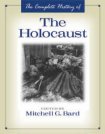 The Complete History Of The Holocaust By Mitchell Geoffrey Bard |
For an in-depth introduction to the subject as much as for reference and research, each of these large, detailed, accessible, well-designed Complete History Of anthologies includes more than 90 entries by well-known people in the field who describe what happened and look critically at how events continue to be interpreted. The selections are organized into chapters, and there are short introductions on the contents pages, full introductions with each entry, and extensive bibliographies. The text, in clear type, two columns per page, is broken up with lots of subheads and occasional black-and-white photographs.
Holocaust is an excellent collection of seminal accounts and commentaries by some of the leading writers in the field. Of course, there's no "complete history" of anything, but especially for smaller collections, these volumes provide both the big picture and a detailed focus on what's important. No further titles in this series are planned at this time. Nearly 6 million Jews died during the years 1933 to 1945. In this unique volume, the authors trace the history of the Holocaust from the life of Adolf Hitler to the Nuremberg Trials and the creation of Israel. They examine the Nazis' plan to annihilate Jews, what life was like in the camps, the perpetrators of the horrific crimes and their victims, the resistance and the rescuers, and, finally, the liberation. The authors also discuss whether the Holocaust could have been prevented and examine the effect of the Holocaust today. Also includes a geographical gazeteer of important places and events, a glossary, a chronology, an appendix of prominent people, bibliographies, and a complete index. |
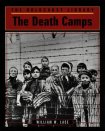 The Death Camps By William W. Lace |
Describes the establishment of concentration camps throughout Nazi-occupied territory whose sole purpose was to exterminate Jews and other people considered undesirable by Hitler and his followers.
A few of the German concentration camps were designed to murder Jews. The Nazis maintained the fiction that these were relocation camps, while they gassed what would ultimately total millions of people. This series title uses primary- and secondary-source quotations in addition to the straightforward, and, yes, judgmental narrative to tell the whole horrific story. Sidebars highlight important figures and present compelling anecdotes, and well-reproduced archival photos extend the information. Lace relates the establishment of concentration camps throughout Nazi-occupied territory, and the sixAuschwitz-Birkenau, Chelmno, Belzec, Sobibor, Treblinka, and Majdanekthat were designated as "extermination facilities." Readers are told that children under five who were difficult to kill with gas were shoved into the crematorium furnaces and burned alive. The author describes the ruses the Germans used to deceive the passengers on the death trains and to prevent riots. After detailing the killing, the suffering, the impossible tragedy of it all, the text continues with stories of escape, rebellion, and liberation. An epilogue discusses how and why these events occurred, concluding, "There is no why." An appendix reveals the fate of select death camp figures. This is a terribly wearing, but an important and well-documented book. |
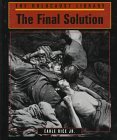 The Final Solution By Earle Rice |
The Final Solution was Hitler's plan to annihilate the Jews of Europe. Thoroughly devised and implemented by Hitler's followers, the Final Solution went far in accomplishing this goal. Six million Jews died as a result of Hitler's second war.
This frank and mature series entry represents the latest trend in Holocaust study, which is to examine in-depth one facet of the whole, here the implementation of the Final Solution, the Nazi euphemism for murder. Following a chronology of events and an introduction defining and briefly explaining the Holocaust, anti-Semitism, and revisionism, Rice explains the points of view of four schools of Holocaust researchers: 1) the "intentionalists," who claim that Hitler and the Nazis intended to annihilate the Jews from the start; 2) the "functionalists," who minimize Hitler's role and argue that the mass extermination of Jews was more a product of a bureaucracy functioning out of control; 3) the "eclectics," who accept parts of both school of thought; and 4) the theory advanced by Daniel Goldhagen that the German people's anti-Semitic beliefs were the central causal agent not only of Hitler's decision to annihilate European Jews, but also of the perpetrators' willingness to kill and brutalize Jews. The Nazi program of anti-Semitism is tracked in the four stages agreed to by historians: exclusion (1933-1935); persecution (1935-1939); expulsion (1939-1941); and annihilation (1941-1945). The author's seamless synthesis of events and opinions by many diverse researchers and survivors is faultless, as is the clarity with which their conclusions and testimony are presented--with pivotal decisions and testimonies highlighted. There are no extraneous photographs, only those that impact upon the text. Notes are provided for each chapter. An outstanding book that integrates many sources, some new, and presents important primary and secondary sources. |
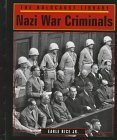 Nazi War Criminals By Earle Rice |
Rice follows up on his outstanding The Nuremberg War Trials with a complementary tour de force. His thorough research and scholarship stand out in his highly readable, interest-holding exposition. Coverage is not limited to the war trials but is presented in the form of profiles of Nazism's most brutal villains. While the names Heinrich Himmler, Adolf Eichmann, and Josef Mengele may be familiar to a number of young readers, Julius Streicher, Reinhard Heydrich, and Rudolf Hoss most likely will not be. The book is enhanced by informative sidebars, a cogent use of appropriate quotations, excellent black-and-white historic photographs, and an extensive bibliography.
|
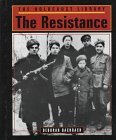 The Resistance By Deborah Bachrach |
In the atmosphere of World War II Europe, the Nazis imposed hardship and engendered fear and a sense of futility in the peoples of Europe. It was the rare individual who braved this atmosphere to try to save lives.
A solidly researched, well-organized, and clearly written survey of the struggle of Jews and non-Jews alike to resist Nazi Germany's efforts to annihilate Europe's Jewish population. Many highly informative boxes and sidebars enhance the text. Bachrach's approach is mainly topical and geographical rather than chronological. Attention is devoted to: the Warsaw Ghetto Uprising; the Polish and Soviet Jews who fled to the forests and formed guerrilla bands; the hiding of Jews in the Netherlands; the Protestant pastors of Le Chambon-sur-Lignon, France, who organized an effort to rescue and hide Jews in their village; and the bravery of the Danes in protecting and evacuating Denmark's small Jewish population. Raoul Wallenberg's assistance to the Jews of Hungary, and the United States government's reluctance to speak out until late into the war are also discussed. The author concludes that the true extent and effectiveness of such a movement is difficult at best to assess, but that it is important to acknowledge the events and people who took part. A good companion volume to the adult book, The Resistance, edited by Russell Miller, as well as Elaine Landau's The Warsaw Ghetto Uprising. A wide variety of black-and-white archival photographs, many of which are poignant and heart wrenching, are included. |
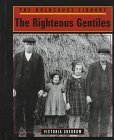 The Righteous Gentiles By Victoria Sherrow |
One of the terrible truths of the Holocaust is that Hitler's "final solution" depended on the cooperation of non-Jews, and even of Jews themselves. Non-Jews, in many cases, aided the Germans in seeking out and murdering their Jewish brethren.
These two volumes complete the series. Each well-researched volume examines a single topic using primary- and secondary-source quotations in addition to narratives to provide the context for understanding one of history's greatest tragedies. Ayer offers a graphic description of liberation, bewilderment, life in the DP camps, and the mood of the world, as well as the survivors' struggles to rebuild their lives. After reading the previous title, Sherrow's book is a tonic. It introduces the noble individuals who risked their lives and those of their families to rescue Jews, as well as churches and governments that defied Hitler's orders to deport the Jews to the camps. In both titles, shaded sidebars highlight important figures and present compelling anecdotes that create a sense of intimacy between reader and subject. The authors' writing styles range from objective to concerned to impassioned, resulting in vital as well as informative reads. The photographs are distinct and well selected. |
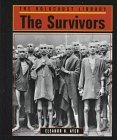 The Survivors By Eleanor H. Ayer |
Hundreds of thousands of Jews lived to see the liberation of the ghettos, labor camps, and death camps at the end of World War II. For many who survived, remaining in Germany or Western Europe was psychologically impossible, and relocation ensued on a mass scale.
These two volumes complete the series. Each well-researched volume examines a single topic using primary- and secondary-source quotations in addition to narratives to provide the context for understanding one of history's greatest tragedies. Ayer offers a graphic description of liberation, bewilderment, life in the DP camps, and the mood of the world, as well as the survivors' struggles to rebuild their lives. After reading the previous title, Sherrow's book is a tonic. It introduces the noble individuals who risked their lives and those of their families to rescue Jews, as well as churches and governments that defied Hitler's orders to deport the Jews to the camps. In both titles, shaded sidebars highlight important figures and present compelling anecdotes that create a sense of intimacy between reader and subject. The authors' writing styles range from objective to concerned to impassioned, resulting in vital as well as informative reads. The photographs are distinct and well selected. For years Holocaust survivors were virtually ignored; now their stories are being told. New books focusing specifically on the survivors are a welcome addition and these two are complementary in their coverage of the topic ... Ayer's book (seventh in the Holocaust Library) is exemplary both for its quality of writing and its thorough treatment of the situation faced by the survivors themselves, both as a group and as individuals. (Be advised, however, that neither book covers the issue of Switzerland and confiscated Jewish assets.) Emphasis is placed on the suffering of survivors after the Holocaust, including the anti-Semitism they encountered in displaced person camps, their difficulties in being allowed to emigrate, and the crucible of violent conflict preceding the creation of Israel. Shaded boxes of text deal with related topics such as the fate of Jewish war orphans, the story of the Exodus ship, and the problems of the children of survivors. |
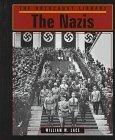 The Nazis By William W. Lace |
The Holocaust represents the first time that the full resources of a modern industrialized nation have been used for the express purpose of mass murder. The Nazis did not kill the Jews in the heat of battle, to secure their property, or to achieve any political power.
In brisk, no-nonsense exposition, Lace sets the scene by summarizing the origins of German anti-Semitism and the Social Darwinism concept of the pureblooded Aryan, the rise of Prussia and its unification of the German states, and the political and economic results of World War I. The text goes on to profile Adolf Hitler, including such details as his life-long feeling that the entire world was against him and his apparent difficulty in telling reality from fantasy. The book discusses the Nazis' growth years, Hitler's seizure of power, the hatred and persecution of Jews, the eventual "final solution," and the Second World War with its Holocaust and mass destruction. A solid complement to Albert Marrin's Hitler. |